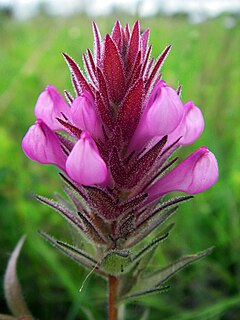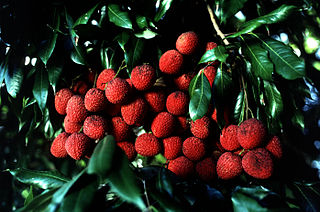
Felidae is a family of mammals in the order Carnivora, colloquially referred to as cats, and constitute a clade. A member of this family is also called a felid. The term "cat" refers both to felids in general and specifically to the domestic cat.

The IUCN Red List of Threatened Species, founded in 1964, is the world's most comprehensive inventory of the global conservation status of biological species. It uses a set of criteria to evaluate the extinction risk of thousands of species and subspecies. These criteria are relevant to all species and all regions of the world. With its strong scientific base, the IUCN Red List is recognized as the most authoritative guide to the status of biological diversity. A series of Regional Red Lists are produced by countries or organizations, which assess the risk of extinction to species within a political management unit.

Threatened species are any species which are vulnerable to endangerment in the near future. Species that are threatened are sometimes characterised by the population dynamics measure of critical depensation, a mathematical measure of biomass related to population growth rate. This quantitative metric is one method of evaluating the degree of endangerment.

The genus Thymus contains about 350 species of aromatic perennial herbaceous plants and subshrubs to 40 cm tall in the family Lamiaceae, native to temperate regions in Europe, North Africa and Asia.

The conservation status of a group of organisms indicates whether the group still exists and how likely the group is to become extinct in the near future. Many factors are taken into account when assessing conservation status: not simply the number of individuals remaining, but the overall increase or decrease in the population over time, breeding success rates, and known threats. Various systems of conservation status exist and are in use at international, multi-country, national and local levels as well as for consumer use.

Leucocroton is a plant genus of the family Euphorbiaceae first described as a genus in 1861. The entire genus is endemic to Cuba.

A least concern (LC) species is a species which has been categorized by the International Union for Conservation of Nature (IUCN) as evaluated as not being a focus of species conservation. They do not qualify as threatened, near threatened, or conservation dependent.

A near-threatened species is a species which has been categorized as "Near Threatened" (NT) by the International Union for Conservation of Nature as that may be considered threatened with extinction in the near future, although it does not currently qualify for the threatened status. The IUCN notes the importance of re-evaluating near-threatened taxon at appropriate intervals.

A critically endangered (CR) species is one that has been categorized by the International Union for Conservation of Nature (IUCN) as facing an extremely high risk of extinction in the wild.
Placodiscus attenuatus is a species of plant in the family Sapindaceae. It is found in Ivory Coast and Ghana. It is threatened by habitat loss.
Placodiscus is a genus of plant in family Sapindaceae. The following species are accepted by Plants of the World Online:
Placodiscus bancoensis is a species of plant in the family Sapindaceae. It is found in Ivory Coast and Ghana. It is threatened by habitat loss.
Placodiscus boya is a species of plant in the family Sapindaceae. It is found in Côte d'Ivoire and Ghana. It is threatened by habitat loss.
Placodiscus caudatus is a species of plant in the family Sapindaceae. It is found in Cameroon, Central African Republic, and Gabon. Its natural habitat is subtropical or tropical moist lowland forests. It is threatened by habitat loss.
Placodiscus oblongifolius is a forest tree in the family Sapindaceae. It is endemic to lowland rain forests of West Africa, with the best studied populations in Ghana.
Placodiscus opacus is a species of plant in the family Sapindaceae. It is found in Cameroon, Central African Republic, Equatorial Guinea, and Gabon. Its natural habitat is subtropical or tropical moist lowland forests. It is threatened by habitat loss.
Placodiscus paniculatus is a species of plant in the family Sapindaceae. It is endemic to the Democratic Republic of the Congo.
Placodiscus pseudostipularis is a species of plant in the family Sapindaceae. It is found in Ivory Coast, Ghana, Liberia, and Sierra Leone. It is threatened by habitat loss.

An endangered species is a species which has been categorized as very likely to become extinct in the near future. Endangered (EN), as categorized by the International Union for Conservation of Nature (IUCN) Red List, is the second most severe conservation status for wild populations in the IUCN's schema after Critically Endangered (CR).

Orthocarpus bracteosus is a species of flowering plant in the broomrape family known by the common name rosy owl's-clover. It is native to western North America from British Columbia to northern California, where it grows in moist mountain habitat, such as meadows.
This page is based on this
Wikipedia article Text is available under the
CC BY-SA 4.0 license; additional terms may apply.
Images, videos and audio are available under their respective licenses.









